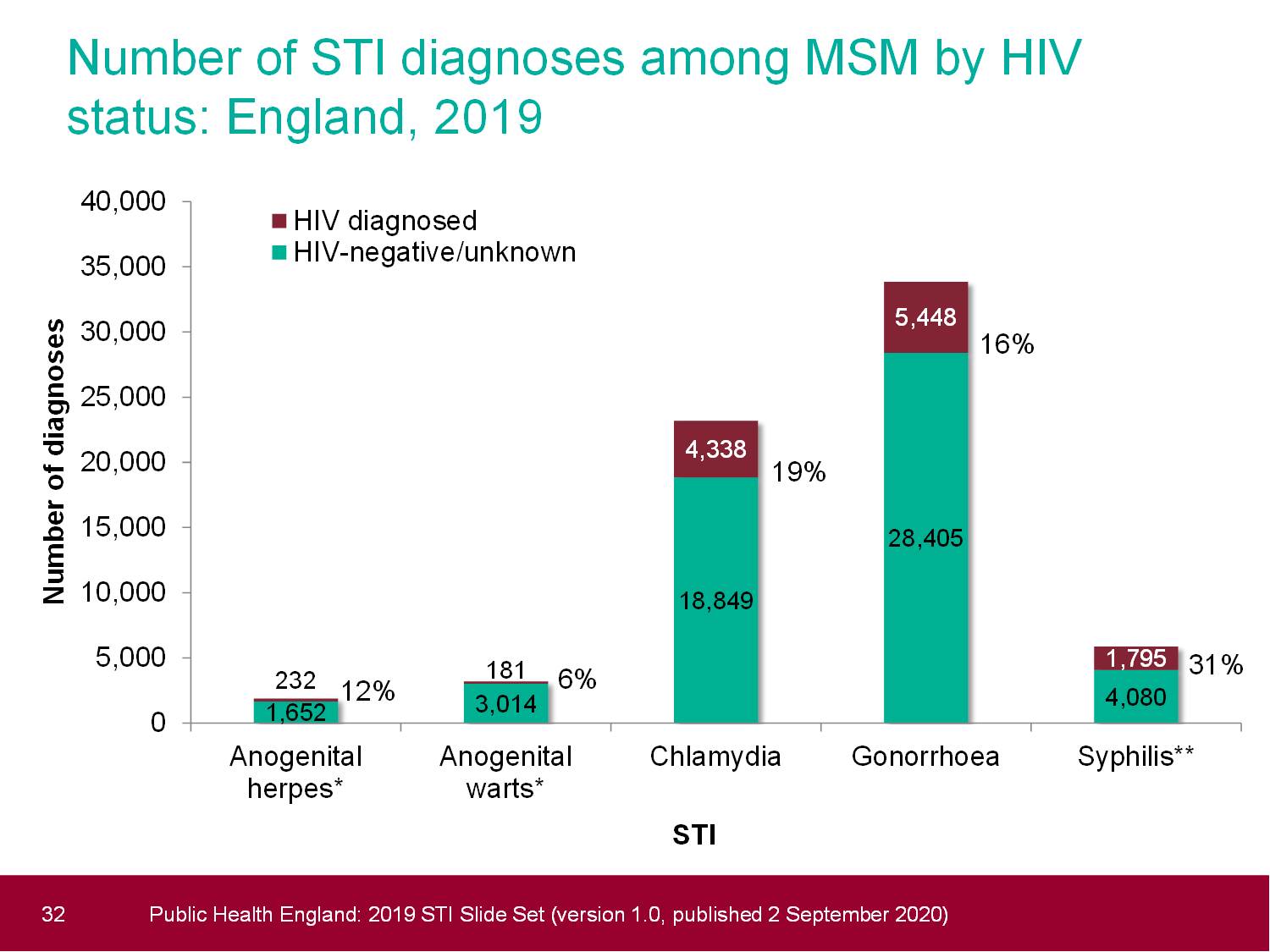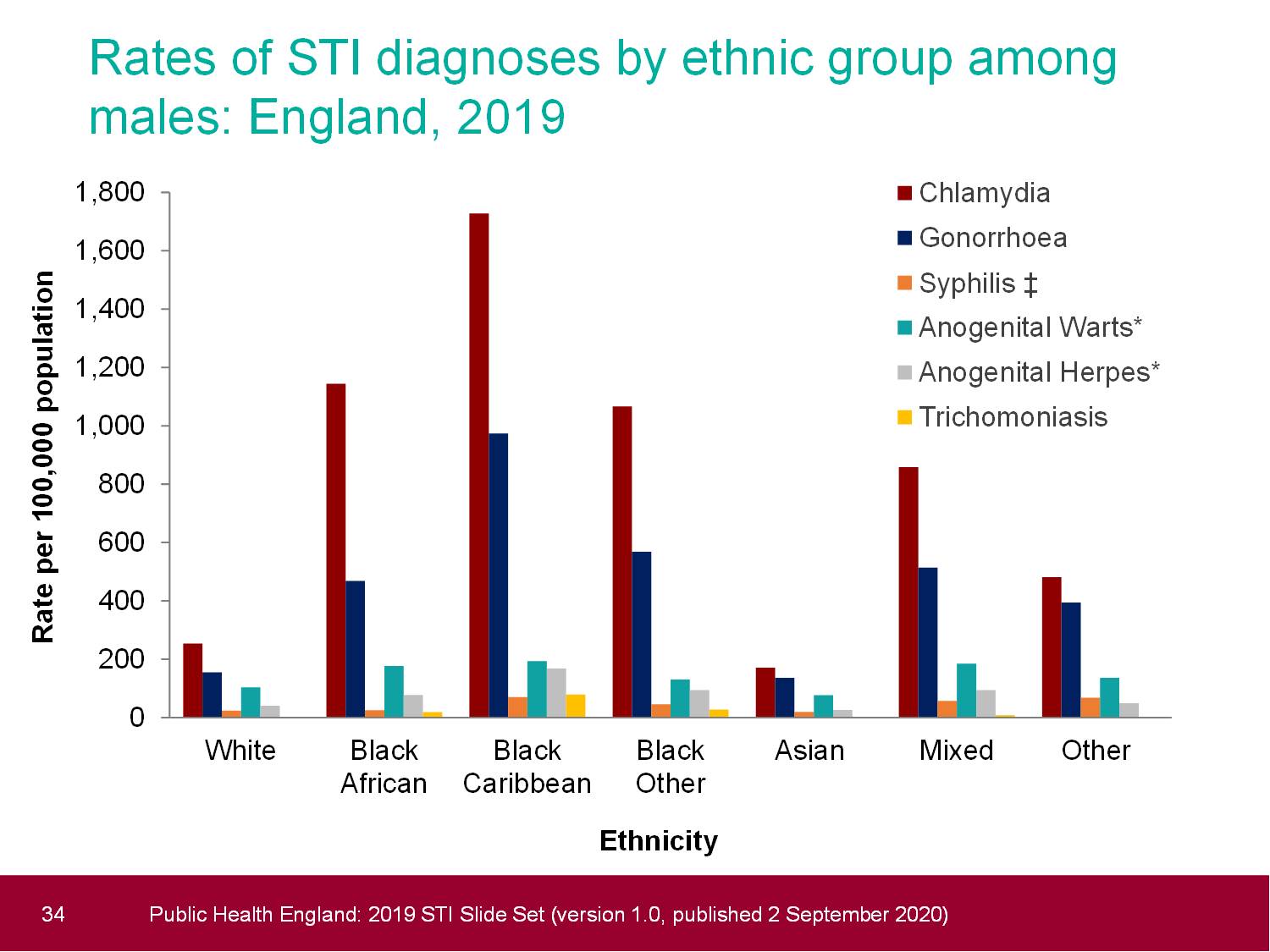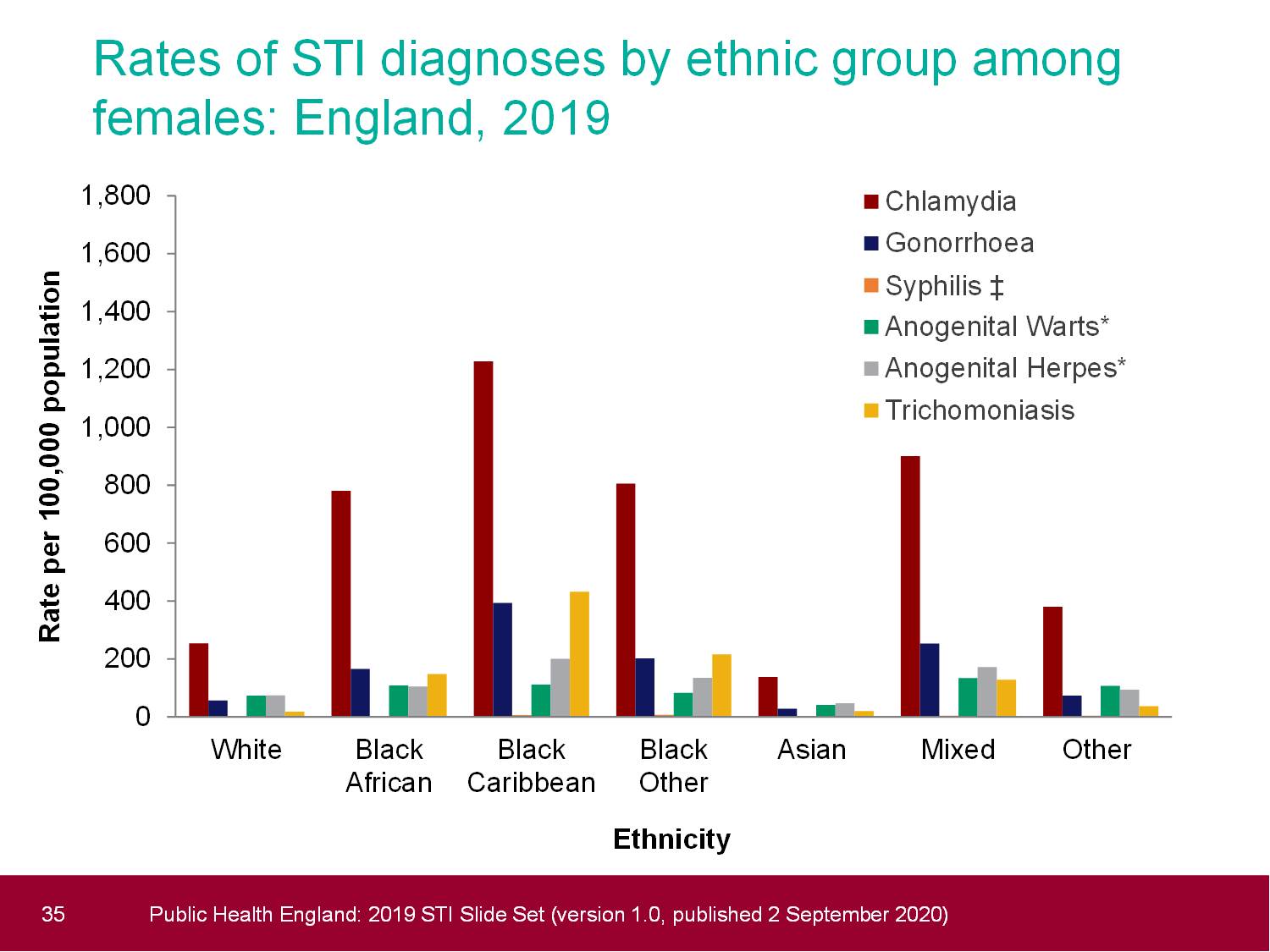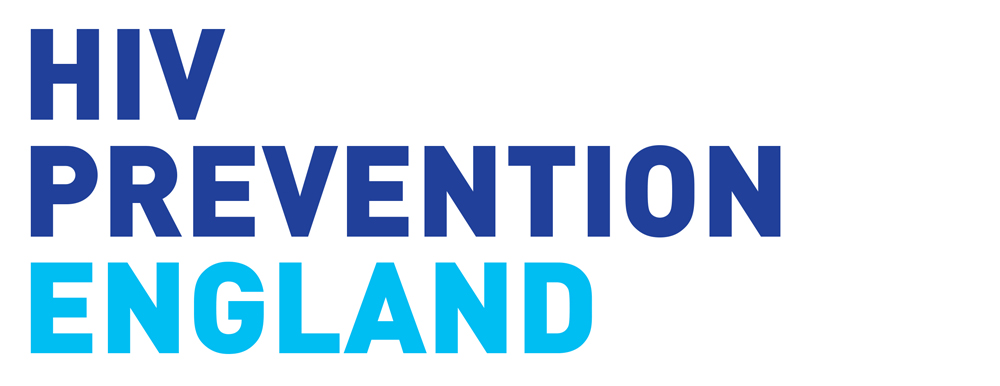Public Health England (PHE) has released the latest sexually transmitted infection (STI) surveillance data for 2019. Following the upward trend since 2015, STIs diagnoses have risen again and 468,342 diagnoses were made in England in 2019, a 5% increase from 2018.

Key findings
Diagnoses
- 468,342 diagnoses of STIs in England in 2019.
- 249,690 recorded gender ‘male’.
- 216,058 recorded gender ‘female’.
- 26% increase in gonorrhoea since 2018, the highest since records began in 1918.
- 10% increase in syphilis since 2018. In women the increase is 36%, but 81% of infections were recorded in men who have sex with men (MSM), of which almost a third (31%) were MSM living with diagnosed HIV.
- 7% increase in number of consultations at sexual health services.
- This is largely driven by a 84% increase in consultations reported by internet services (from 260,708 to 480,112).
- 11% decrease in genital warts.
Testing and screening
- The National Chlamydia Screening Programme (NCSP) conducted 2% more tests in 2019 compared to 2018; however, there has been a 13% decline since 2015 (from 1,546,180 in 2015 to 1,339,913 in 2019).
- 181 sexual health services reported testing for Mycoplasma genitalium (M.Gen) in 2019, compared to 107 in 2018.
- This increase in testing capabilities has largely influenced the 196% increase in M.Gen diagnoses in 2019, up to 5,311.
Disproportionately impacted populations
Young heterosexuals 15 to 24 years; black ethnic minorities; and gay, bisexual and other MSM continue to report the highest rates of STIs in England.
Young heterosexuals
The majority of chlamydia diagnoses (62%) and gonorrhoea diagnoses (54%) in sexual health services were made in young heterosexuals. This group was also attributed to 41% of genital herpes diagnoses and 40% of genital warts.
MSM
Bacterial STIs are more likely to be diagnosed in MSM than other men. 81% of syphilis diagnoses were in MSM as well as 66% of gonorrhoea. The most common STIs have seen substantial increases in this population, with gonorrhoea diagnoses increasing by 26% and chlamydia diagnoses by 21%.
Of all MSM diagnosed with an STI in sexual health services in 2019, 18% were living with diagnosed HIV. A breakdown of STIs diagnosed in MSM by HIV status is provided in the graph below.

Black minority ethnic and other impacted populations
Black minority ethnic (BME) populations continue to be disproportionately impacted by STIs. In particular, the rate of gonorrhoea in BME people is 3.5x that of the general population and the rate of trichomoniasis is 9x that of the general population.
The largest proportional increase in all new STI diagnoses was in people of Asian ethnicity (16%; from 15,168 to 17,522), this was largely due to large increases in new gonorrhoea (36%) and chlamydia (27%) diagnoses.
The disparities between different ethnic groups are best seen in these images below, looking at rates of STIs for both men and women.


PHE has provided data based on World regions of birth, these have shown high overall increases of STI diagnoses in England with:
- 9% of people born in the EU,
- 11% of people born in North America,
- 12% of people born in South Asia,
- 16% of people born in South America,
- 21% of people born in Central America.
Impact of COVID-19
The latest data release does not cover the period since the COVID-19 pandemic began. However, PHE has advised that they are already analysing the surveillance data and how the impact of the COVID-19 response in England has affected HIV and STI service provision and epidemiology. Provisional findings are due in the coming months.
The latest report outlines how the national programme with PHE, Terrence Higgins Trust and 56 Dean Street delivered 10,000 free self-sampling HIV (and opt-in syphilis test) kits as part of the summer ‘Break the chain’ campaign.
PHE has also published a new national framework for e-sexual and reproductive healthcare. This provides information on how e-sexual and reproductive services can complement specialist, clinic-based facilities in local areas, providing other methods of accessing healthcare.
Resources from PHE
Sexually transmitted infections and chlamydia screening in England: 2019 [PDF].
Latest STI data tables, infographics and supplemental information.
National framework for e-sexual and reproductive healthcare: User guide [PDF]

